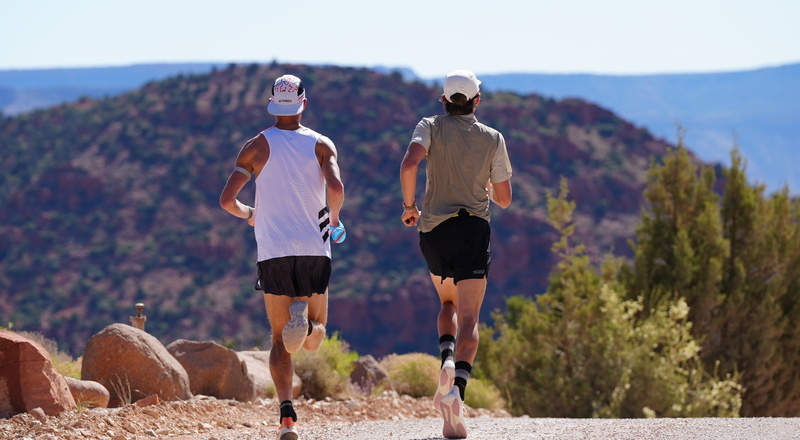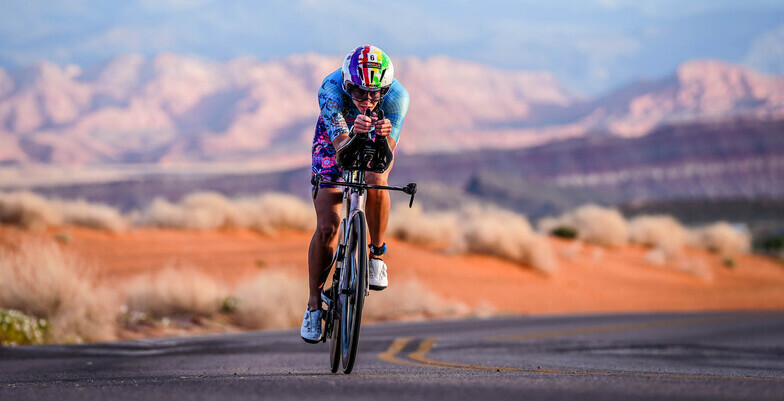Ever since people could climb mountains and run long distances, they have been. When bikes came along, they got on those and rode them for hours, too. Why? As the saying goes: Because it’s there!
What exactly this looks like has changed over the years. People started stringing the sports together and calling it triathlon. Professional sports were added. Popularity has ebbed and flowed. Did you know massive crowds used to gather in the original Madison Square Garden in New York to watch athletes walk in circles for hundreds of miles? It was quite the spectator attraction. True story.
Now, with so much happening in triathlon, it feels like the sport is ripe for more change again. How will it all shake out? What will triathlon and endurance sports look like in 2030? I have a few predictions.
1. You won’t just be a triathlete / cyclist / runner anymore
Coming out of the pandemic, it’s been a bit of a mixed bag. Originally, it appeared that huge numbers of new people picked up biking and running and hitting the dirt — but then not all of them stuck with it. Work, stress, health, life, supply chain issues. Plus, organized events, gyms, and travel all took massive hits — some of which are only now being realized. (Yes, the pandemic feels like forever ago, but also it wasn’t.)

While triathlons and running races are starting to see numbers go back up, the reality is athletes aren’t committing to just one sport the way they used to anymore. Now, it’s more like: a trail race, then a gravel event, maybe a multi-day bike tour or hiking thing, plus sign up for that one triathlon all of your friends are doing. And this isn’t going to change. In fact, I think it’ll just become the norm. Even on the pro side you’re seeing more athletes mix running and skiing and cycling and climbing. By 2030, we’ll finally have a name for what people are already starting to do: Multi-multisporters?
2. US short-course triathlon will see a revival
Since triathlon was added to the Olympic program in 2000, there hasn’t been a home summer Games in the U.S. It’s well documented that the Olympics can be a boon to niche sports — especially if the home country does well. All of a sudden people want to try this thing they saw on TV. Be like Gwen! (Or, well, be like Taylor Knibb!) That means a U.S. medal in L.A., if the federation is ready to take advantage of it with local race infrastructure, could bring the masses back to short-course.
Ironman has long reigned supreme in the country of its birth and a number of factors led to the decline of short-course racing in America over the last decade. But with Supertri ready to invest here and USA Triathlon supporting grassroots sprint, super sprint, and mixed relays, the late 2020s could be the right time for a revival, for those new athletes to mix some short-course tri in with their mulit-multisporting.
3. Only some of the big new bets will survive
The PTO, Supertri, the IRONMAN® Pro Series. Did you know there’s also about to be a new pro track league launching next year? And a few of the top cycling teams are in discussions with Saudi investors to create a Champions League, too? There was even the International Swim League, backed by a Ukrainian billionaire until the invasion in that country brought it to an abrupt end.
Of course, when there’s been a lack of innovation and investment for so long, it leaves huge amounts of room to grow and reap the rewards (see: all of women’s sports right now). But much like streaming services — which completely shook up the TV model for better and worse — not all of them can survive. Realistically, an individual can’t be expected to have subscriptions to Netflix and Hulu and Amazon and Peacock and Disney+ and HBO’s Max and AppleTV. By 2030, we’ll be saying: “Do you remember that thing…?”
4. The leaps in women’s sports performance will keep coming
Speaking of things where there’s currently endless room for innovation and improvement: We’re only just beginning to recognize how much we don’t know about women’s physiology, training, and sports science.
A new wave of researchers and doctoral programs is coming through the ranks right now and working to address that: researching everything from if training doses that were designed for men are the same for women, how strength training should be adjusted, if hormonal cycles change heat protocols, to whether women utilize glycogen at the same rates and how sports bras affect breathing restriction.

There have been leaps in performances recently (both men and women, but more with the women) — and a large amount of that comes down to proper investment, funding, development, resources, equipment, and inspiration. But while some of the performance jumps on the men’s side are likely to level off soon, we’re just going to keep adding insights to the women’s half of the sport for at least the next decade until the performance improvements catch up. By the 2030s it’ll be hard to imagine a time when there wasn’t research on female athletes or crazy numbers of fans watching these women.
5. More races are gonna get cancelled
Sorry, but it’s true. Hot is getting hotter. Storms are getting stormier. Race directors have been bracing for this reality for a few years now. And by 2030, whatever your feelings on what we do about climate change, the extreme weather conditions are going to be the standard in our sports.
